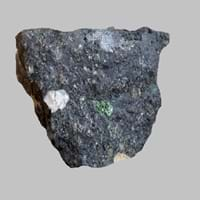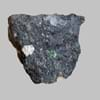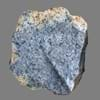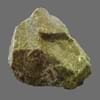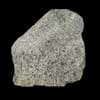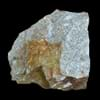Definition
Kimberlite is a rare, blue-tinged, coarse-grained intrusive igneous rock, which sometimes contains diamonds and is mostly found in South Africa and Siberia.
Coal is a combustible black or brownish-black sedimentary rock usually occurring in rock strata in layers called coal beds
Origin
Kimberley, South Africa
USA
Discoverer
Unknown
John Peter Salley
Etymology
From Kimberley + -ite, from the name of the South African town of Kimberley where the rock was first found.
From the Old English term col, which has meant mineral of fossilized carbon since the 13th century
Class
Igneous Rocks
Sedimentary Rocks
Sub-Class
Durable Rock, Hard Rock
Durable Rock, Soft Rock
Group
Volcanic
Not Applicable
Other Categories
Coarse Grained Rock, Fine Grained Rock, Opaque Rock
Coarse Grained Rock, Fine Grained Rock, Medium Grained Rock, Opaque Rock
Texture
Porphyritic
Amorphous, Glassy
Color
Black, Bluish - Grey, Brown, Dark Greenish - Grey, Green, Grey
Black, Brown, Dark Brown, Grey, Light to Dark Grey
Durability
Durable
Durable
Appearance
Dull and Banded
Veined or Pebbled
Interior Uses
Countertops, Decorative Aggregates, Homes, Interior Decoration
Not Yet Used
Exterior Uses
As Building Stone, Paving Stone, Garden Decoration
Not Yet Used
Other Architectural Uses
Curbing
Not Yet Used
Construction Industry
As a Flux in the Production of Steel and Pig Iron, As a Sintering Agent in Steel Industry to process Iron Ore, As Dimension Stone, Cement Manufacture, for Road Aggregate, Making natural cement, Manufacture of Magnesium and Dolomite Refractories
Cement Manufacture, for Road Aggregate, Making natural cement, Steel Production
Medical Industry
Taken as a Supplement for Calcium or Magnesium
Not Yet Used
Antiquity Uses
Artifacts, Monuments, Sculpture, Small Figurines
Artifacts
Commercial Uses
An Oil and Gas Reservoir, As a Feed Additive for Livestock, Gemstone, Metallurgical Flux, Production of Lime, Soil Conditioner, Source of Magnesia (MgO)
Alumina Refineries, Electricity Generation, Liquid Fuel, Manufacture of Soap, Solvents, Dyes, Plastics and Fibres, Paper Industry
Types
Basaltic Kimberlites and Micaceous Kimberlites
Peat, Lignite, Sub-Bituminous Coal, Bituminous Coal, Anthracite, Graphite
Features
Always found as volcanic pipes over deep continental crust, Host rock for Diamond, Is one of the oldest rock, Surfaces are often shiny
Helps in production of Heat and Electricity, Used as fossil fuel
Archaeological Significance
Monuments
Used
Not Yet Used
Famous Monuments
Data Not Available
Not Applicable
Sculpture
Used
Not Yet Used
Famous Sculptures
Data Not Available
Not Applicable
Pictographs
Not Used
Not Used
Petroglyphs
Not Used
Not Used
Figurines
Used
Not Yet Used
Formation
Kimberlite is an igneous rock and is the main source of diamonds. Its formation takes place deep beneath the Earth’s surface between 150 to 450 kilometres, and are erupted rapidly and violently.
Coal forms from the accumulation of plant debris in a swamp environment which is buried by sediments such as mud or sand and then compacted to form coal.
Mineral Content
Garnet, Olivine, Phlogopite, Pyroxene
Analcime, Apatite, Barite, Calcite, Chalcopyrite, Chlorite, Chromite, Clausthalite, Clay Minerals, Crandallite Group, Dolomite, Feldspar, Galena, Gypsum, Marcasite, Muscovite or Illite, Pyrite, Quartz, Siderite, Sphalerite, Zircon
Compound Content
Aluminium Oxide, NaCl, CaO, Iron(III) Oxide, FeO, Potassium Oxide, MgO, MnO, Sodium Oxide, Silicon Dioxide, Titanium Dioxide
Carbon, Hydrogen, Nitrogen, Oxygen, Sulphur
Types of Metamorphism
Burial Metamorphism, Cataclastic Metamorphism, Contact Metamorphism, Hydrothermal Metamorphism, Impact Metamorphism, Regional Metamorphism
Burial Metamorphism, Cataclastic Metamorphism, Regional Metamorphism
Types of Weathering
Biological Weathering, Chemical Weathering, Mechanical Weathering
Not Applicable
Types of Erosion
Chemical Erosion, Coastal Erosion, Glacier Erosion, Sea Erosion, Water Erosion, Wind Erosion
Not Applicable
Grain Size
Fine to Coarse Grained
Medium to Fine Coarse Grained
Fracture
Conchoidal
Conchoidal
Porosity
Very Less Porous
Less Porous
Luster
Subvitreous to Dull
Dull to Vitreous to Submetallic
Cleavage
Conchoidal
Non-Existent
Toughness
Not Available
Not Available
Specific Gravity
2.86-2.87
1.1-1.4
Transparency
Translucent to Opaque
Opaque
Density
2.95-2.96 g/cm3
1100-1400 g/cm3
Resistance
Heat Resistant, Impact Resistant
Heat Resistant
Deposits in Eastern Continents
Asia
Russia
Bangladesh, Burma, Cambodia, China, India, Indonesia, Kazakhstan, Malaysia, Mongolia, Pakistan, Turkey, Vietnam
Africa
Angola, Botswana, Cameroon, Ethiopia, South Africa
Botswana, Kenya, Morocco, Mozambique, South Africa, Tanzania
Europe
England, Hungary, Iceland, United Kingdom
Belgium, Bulgaria, England, France, Germany, Greece, Hungary, Kosovo, Netherlands, Norway, Poland, Romania, Serbia, Slovakia, Slovenia, The Czech Republic, Ukraine, United Kingdom
Others
Antarctica
Not Yet Found
Deposits in Western Continents
North America
Canada, USA
Canada, Mexico, USA
South America
Argentina, Colombia, Ecuador
Brazil, Chile, Colombia, Venezuela
Deposits in Oceania Continent
Australia
New South Wales, New Zealand, South Australia, Western Australia
New South Wales, Queensland, Victoria
All about Kimberlite and Coal Properties
Know all about Kimberlite and Coal properties here. All properties of rocks are important as they define the type of rock and its application. Kimberlite belongs to Igneous Rocks while Coal belongs to Sedimentary Rocks.Texture of Kimberlite is Porphyritic whereas that of Coal is Amorphous, Glassy. Kimberlite appears Dull and Banded and Coal appears Veined or Pebbled. The luster of Kimberlite is subvitreous to dull while that of Coal is dull to vitreous to submetallic. Kimberlite is available in black, bluish - grey, brown, dark greenish - grey, green, grey colors whereas Coal is available in black, brown, dark brown, grey, light to dark grey colors. The commercial uses of Kimberlite are an oil and gas reservoir, as a feed additive for livestock, gemstone, metallurgical flux, production of lime, soil conditioner, source of magnesia (mgo) and that of Coal are alumina refineries, electricity generation, liquid fuel, manufacture of soap, solvents, dyes, plastics and fibres, paper industry.
